Pulitzer Prize winner Toni Morrison celebrated in new exhibit at Princeton University
- Oops!Something went wrong.Please try again later.
The late Toni Morrison is still teaching lessons at Princeton.
Morrison, the Pulitzer Prize winner, Nobel laureate, New Jersey Hall of Fame inductee and longtime Princeton University professor, is the subject of the new exhibition “Toni Morrison: Sites of Memory,” on display at the Princeton University Library’s Milberg Gallery through June 4.
Drawing on the nearly 400 boxes of material housed in the Toni Morrison Papers archive at the library, the exhibition is intended to inspire more questions than answers, and is sparking creative activity around town, according to curator Autumn Womack, associate professor of English and African American Studies.
“I often think there’s a tendency to think of archives as these dusty places, right? Kind of where history lives instead of the site from which the future might get produced. It was really important for me to bring that ethos to life,” Womack said.
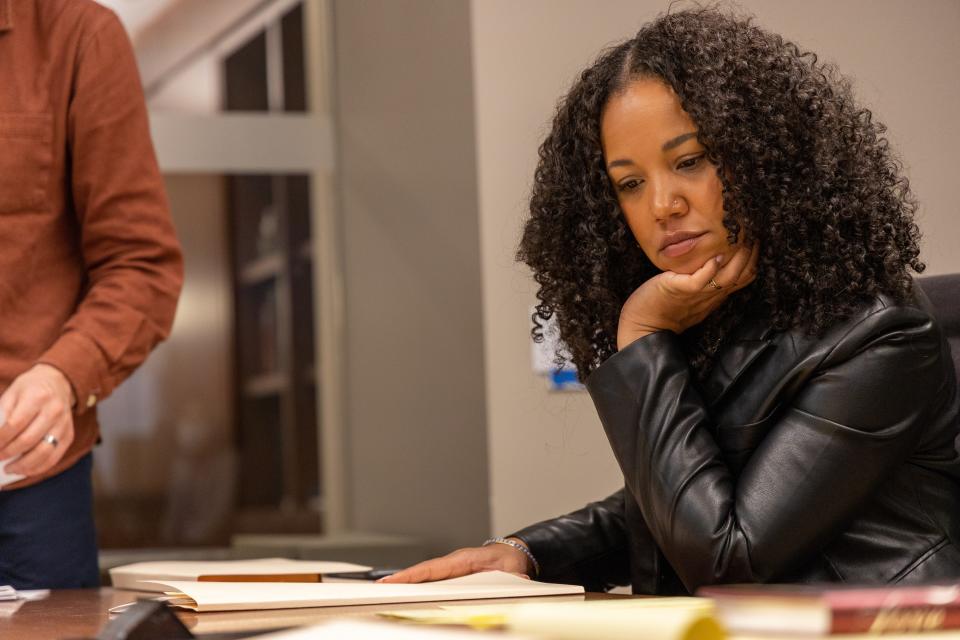
That goal is incredibly consistent with Morrison’s professional life as outlined in “Sites of Memory.” An author, editor and professor, she was all about the work and the process. Visitors to the library can see it in her drafts and notes, adorned with scratches, scribbles and edits, jotted down on yellow legal pads, scraps of paper, even on the pages of other writers’ work.
“It felt really important to lead with that message, since it’s one of the things that I learned working with the team and the archives, that the process and the practice was so crucial to her,” Womack said.
Morrison, who died in 2022 at the age of 88, taught at Princeton for 17 years starting in 1989. Her voice provides the soundtrack to “Sites of Memory” — thanks to two hours of footage from an eight-hour 1987 Boston University interview conducted following the publication of her Pulitzer Prize-winning novel, “Beloved.”
Visitors to the space can’t help but feel like students.
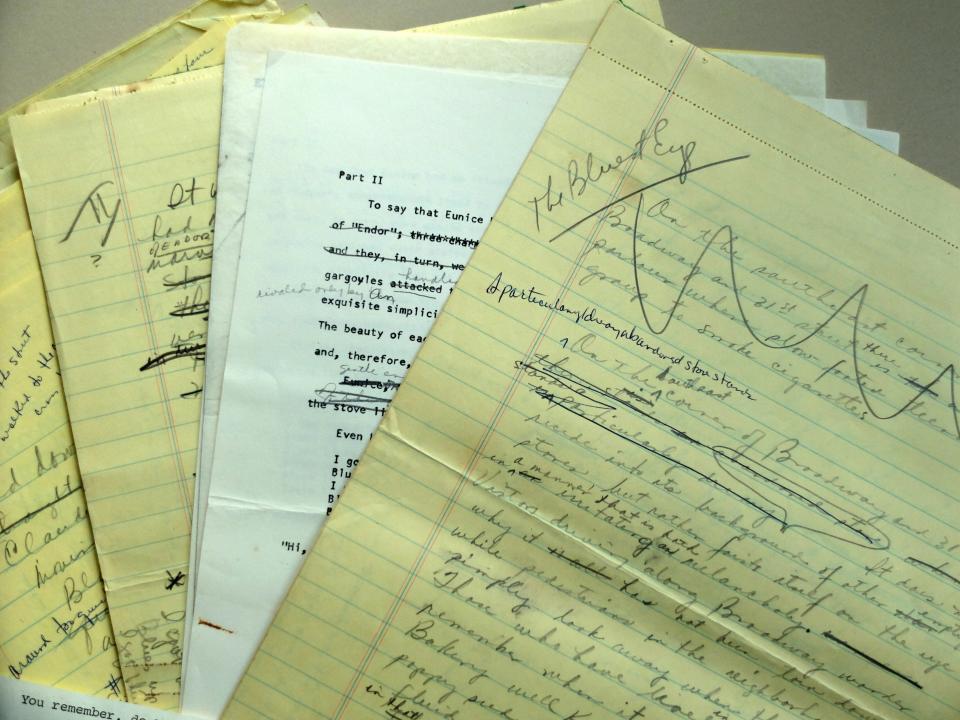
There are her hand-drawn maps for key locations in “Beloved” and 1998’s “Paradise” amid a slew of graphs, charts and reference photos. In the creation of her fiction, Morrison seemed to draw on elements of architecture, genealogy and geography, with an almost mathematically precise approach to language.
In a captivating section of the exhibition dedicated to 1992’s “Jazz,” draft pages find Morrison seemingly interrogating her own work in type as she fine-tunes her concept of “bookvoice.”
“How does a book sound when it is speaking as itself and taking the prerogative of being both a voice, the narrator’s voice, and the voice of a talking book?” she writes, before adding, handwritten in pencil: “A hidden character’s point of view.”
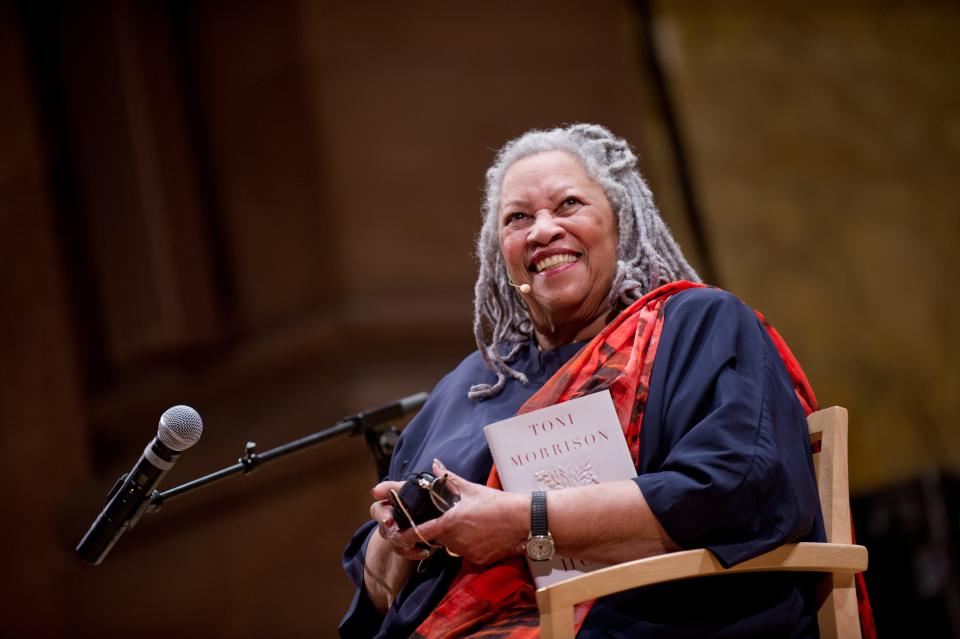
'This was a different kind of story'
“Sites of Memory” has plenty to tell and to ask about Morrison’s work, but its perspective is almost strictly limited to her work.
Among the singed pages saved from a 1993 fire at Morrison’s home in Rockland County, N.Y., are the only remnants of the draft for 1977’s “Song of Solomon.” There are a handful of burned diary pages as well, but the fire is principally discussed with regard to its impact on her archives.
The personal correspondence with the likes of Nina Simone on display, though illuminating, only goes in one direction. We see letters sent to Morrison, but letters sent by her are not in the library archive.
There are pages from Morrison’s mid-1970s day planners during her career at Random House, editing work by, among others, Angela Davis and Muhammad Ali. There's also a copy of “College Reading Skills,” a 1966 textbook she co-edited.
There’s nothing on display relating to her time teaching at Princeton. The library, Womack explained, doesn’t have access to her teaching files, which are under embargo because they contain students’ names.
Morrison made her debut in 1970 with the still-controversial novel “The Bluest Eye,” the story of a young Black girl growing up in an abusive home. That book’s first edition, on display in “Sites of Memory,” featured its opening passage on the front cover — there was no avoiding the fact that this was a book about a child who was raped by her father.
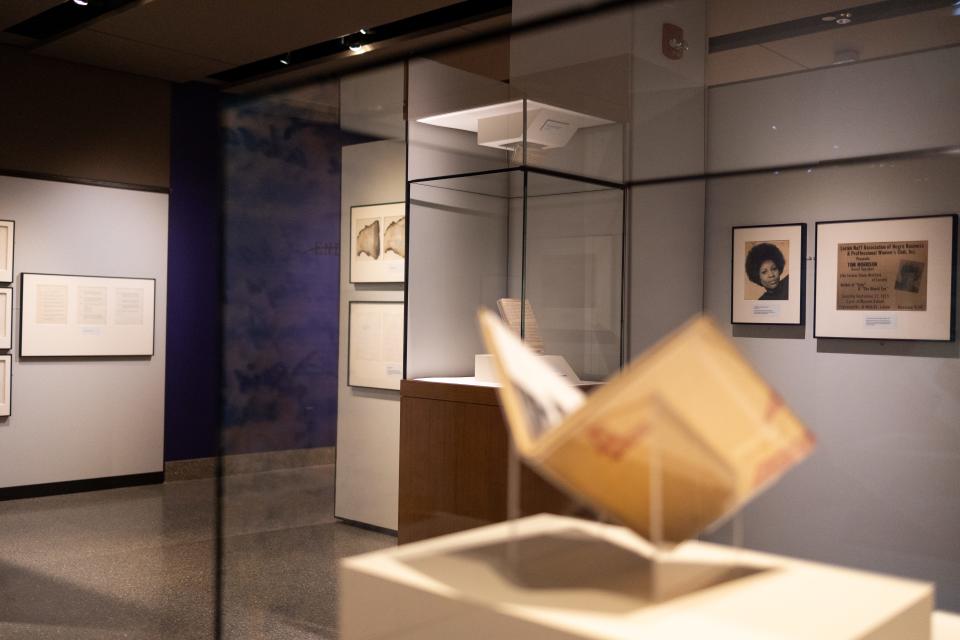
“From the very beginning, we have Toni Morrison emerging as a particular kind of writer, one who would make really bold editorial decisions, even on the level of cover design,” Womack said. “But also, in 1970, (this) was a different kind of story for Black readers. … There was not a huge volume of Black women writers and novelists, and there was a resistance to this kind of story. And so, she made a really bold entrance on the literary scene.”
Inspired by the exhibit
Coinciding with “Sites of Memory,” the Princeton University Art Museum presents “Cycle of Creativity: Alison Saar and the Toni Morrison Papers,” pairing Morrison materials with Saar’s work in sculpture, print and textiles. It runs at the museum’s Art@Bainbridge gallery in downtown Princeton Saturday, Feb. 25, through Sunday, July 9.
Additionally, the McCarter Theatre in Princeton has commissioned performance artists Daniel Alexander Jones and Mame Diarra (Samantha) Speis to create original works inspired by Morrison, with the first set to debut Friday and Saturday, March 24 and 25.
In addition, Princeton University Concerts will co-present a newly commissioned work by MacArthur Fellow and Grammy-winning jazz singer Cécile McLorin Salvant on Wednesday, April 12, at the Richardson Auditorium in Princeton’s Alexander Hall.
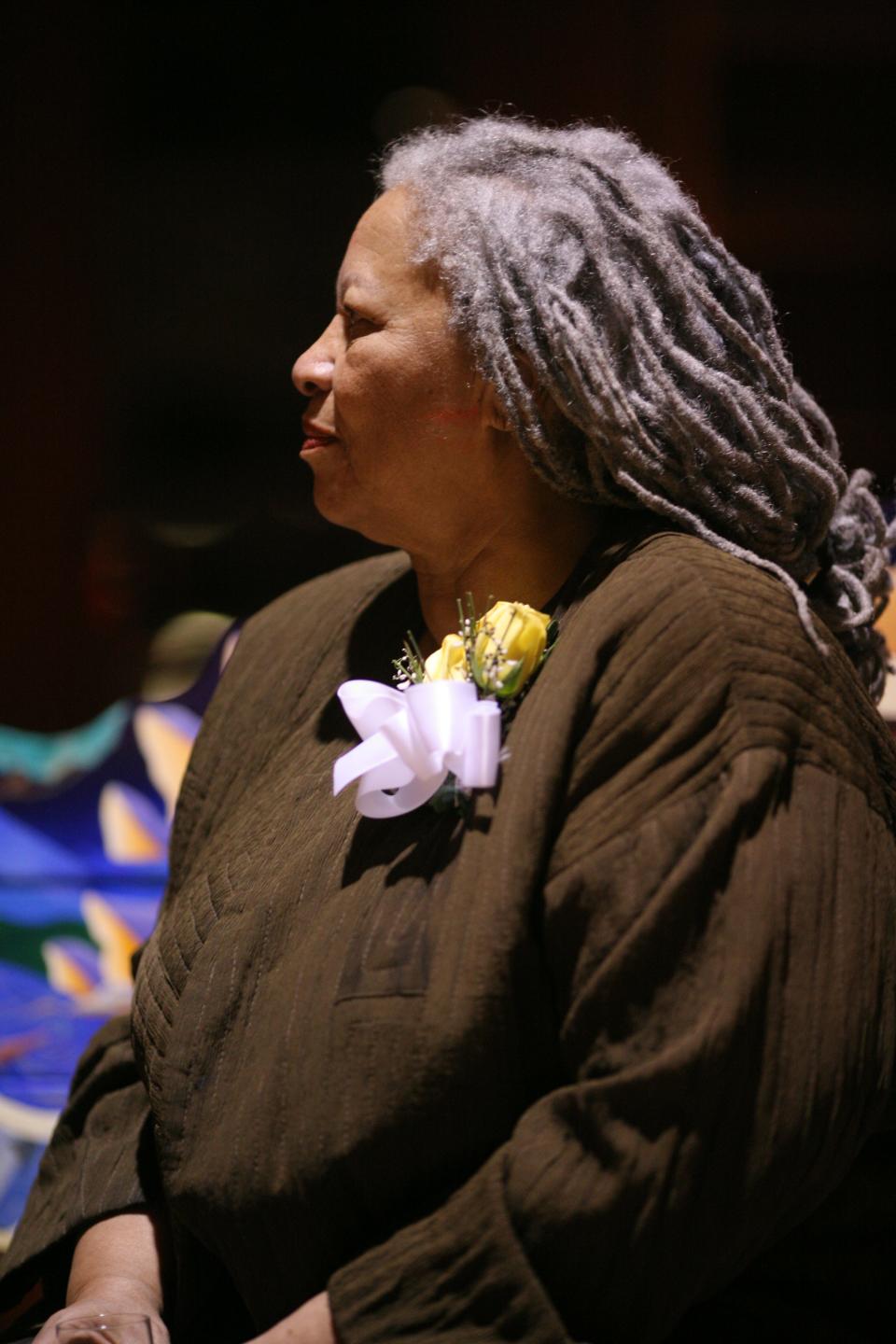
Womack and Kinohi Nishikawa, associate professor of English and African American Studies, have organized a three-day symposium happening Thursday, March 23, though Saturday, March 25, and the Department of African American Studies will present its Morrison Lectures in the spring.
There also will be public tours of “Sites of Memory,” children’s programs and undergraduate classes. In the fall, the library will debut “In the Company of Good Books: Shakespeare to Morrison,” featuring items including William Shakespeare’s first folio and previously unseen Morrison work.
If that's not enough, Morrison will be honored with a 2023 stamp from the U.S. Postal Service, set to be issued on Tuesday, March 7, in Princeton.
These laurels are arriving at a time when Morrison’s work remains the subject of fierce public debate. The American Library Association named “The Bluest Eye” among the top 10 most-challenged books in the country in 2021, according to its April 2022 State of America’s Libraries Report.
Morrison’s work is under attack in school districts across the country, with “The Bluest Eye” having been removed from curricula — including Washington Township High School in Gloucester County, the Philadelphia Inquirer reported earlier this month.
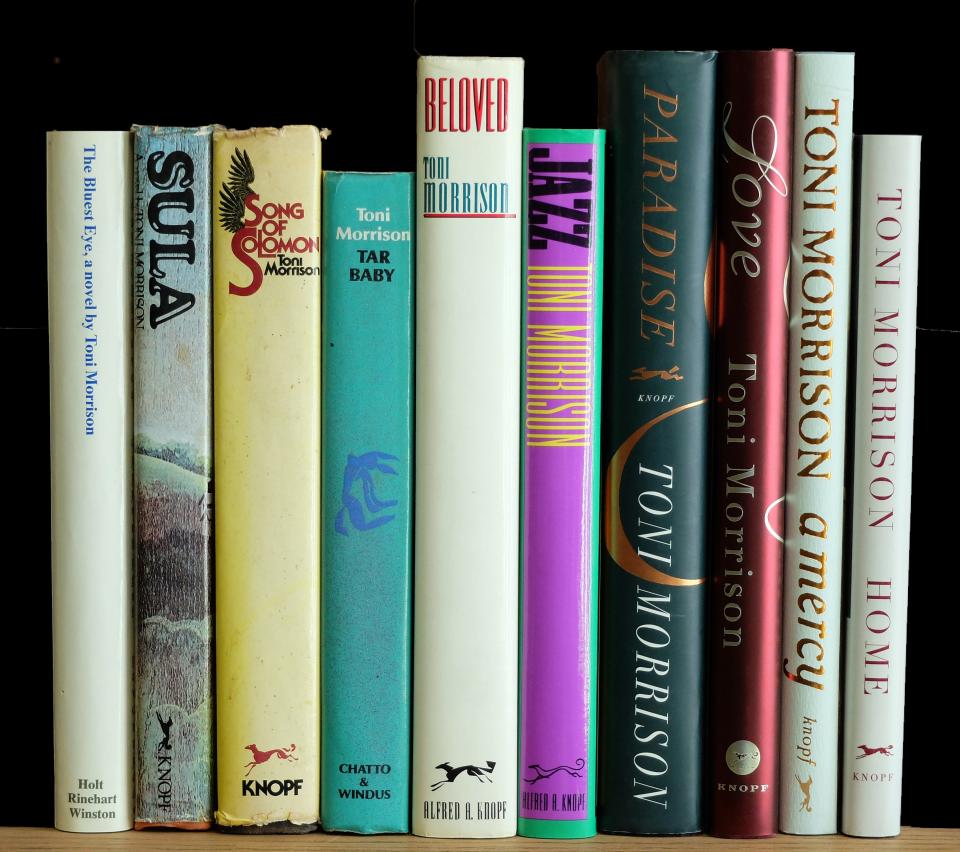
Womack discussed her hopes for “Sites of Memory,” in light of the fact that libraries have become a political and cultural battleground.
“It was really important for me to invite people to see the archival life of books,” she said. “I think it’s too easy to mobilize them as ideological tools, but I think it’s harder to do that when you see the archival worlds from which they emerge and the historical context that was crucial to writing them. So it’s import to me to show the artistic life of these books.”
Go: "Toni Morrison: Sites of Memory," on display through June 4, Princeton University Library, One Washington Road, Princeton; library.princeton.edu.
This article originally appeared on Asbury Park Press: Toni Morrison, Beloved author, celebrated in new Princeton exhibit

